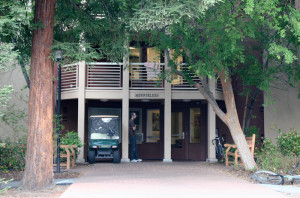
Stanford’s first foray into substance-free housing began last week when 24 pilot year participants moved into a first floor wing of the Mirrielees apartment complexes. Because the program is new this year, residents will be largely responsible for setting the norms of the substance-free community.
Although the official punishment for failing to uphold the substance-free standard is reassignment to a different residence hall or removal from housing, students in the program believe they have some leeway.
“I think that is kind of something that they want us to figure out and make for ourselves, since we are the pilot group [or] the guinea pigs for substance-free,” said Johnathan Bowes ’15, a first-floor Mirrielees resident.
Banned substances include “alcohol, illicit drugs, cigarettes and other forms of smoking materials,” according to Residential Education (ResEd). Residents and their guests are not allowed to return to the residence under the influence of or in possession of any banned substances.
“It’s totally okay for people to go out and party and drink and stuff, it’s just more about making a dorm environment that’s not based around that,” Bowes said.
Ralph Castro, director of the Office of Alcohol Policy and Education (OAPE), wrote in an email to The Daily that the idea of substance-free housing was developed as “part of [OAPE’s] approach to address alcohol in a multifaceted manner,” and noted that substance-free housing is one way to bring together the community of students who choose to avoid alcohol and other drugs.
“We are actively working to strengthen our support for non-drinkers and this accomplishes one piece of that goal,” Castro said.
Bowes said that though a community is beginning to form among Mirrielees residents, outsiders are less likely to understand the choice to live on a substance-free floor.
“It kind of comes across as we’re judgmental, like the Woman’s Temperance Union or whatever from back in the day,” Bowes said. “From what I can tell so far, that’s totally not us, that’s not why I’m here, that’s not why my roommate is here, that’s not why the few people that I know and have talked to are here. It’s more about, ‘Hey, we’re not personally into living in the center of a discotheque.’”
Many of Stanford’s peer institutions, including Dartmouth and Princeton, instituted substance-free housing programs as early as 2002. Stanford’s program, which Castro said has been discussed for many years, was developed in response to student requests for a substance-free housing option.
“My roommate and I chose substance-free housing because we felt that there was a lot of pressure to participate in the drinking culture in other dorms,” Amy Nguyen ’15 wrote in an email to The Daily. “Many of our friends and dormmates wanted to socialize through alcohol and partying, so we weren’t able to connect with people without going to those events.”
Nguyen believes that most people in the house will not have any issues with adhering to the substance-free standard.
“I think for most people in substance-free housing, alcohol and drugs are just not a part of our lifestyle so we never think about breaching the rules,” she said. “It’s easy for us to be in substance-free housing because we just continue our normal lifestyle without being bothered by the drinking culture.”
Although this year’s substance-free housing was only available to upperclassmen, some freshmen wish that they had had the chance to live in a substance-free environment.
“Although drinking parties in my dorm don’t really affect me, I prefer living in a dorm without these sorts of influences,” Wilbur resident Joanne Lynn ’16 said. “Next year, if possible, I will apply for substance-free housing.”
However, the future of substance-free housing is still unclear.
“Since it is a pilot, we will study and review it after this year and see which direction is best to proceed in,” Castro said. “We will gather information from the students living there on how it can be strengthened or expanded moving forward.”
